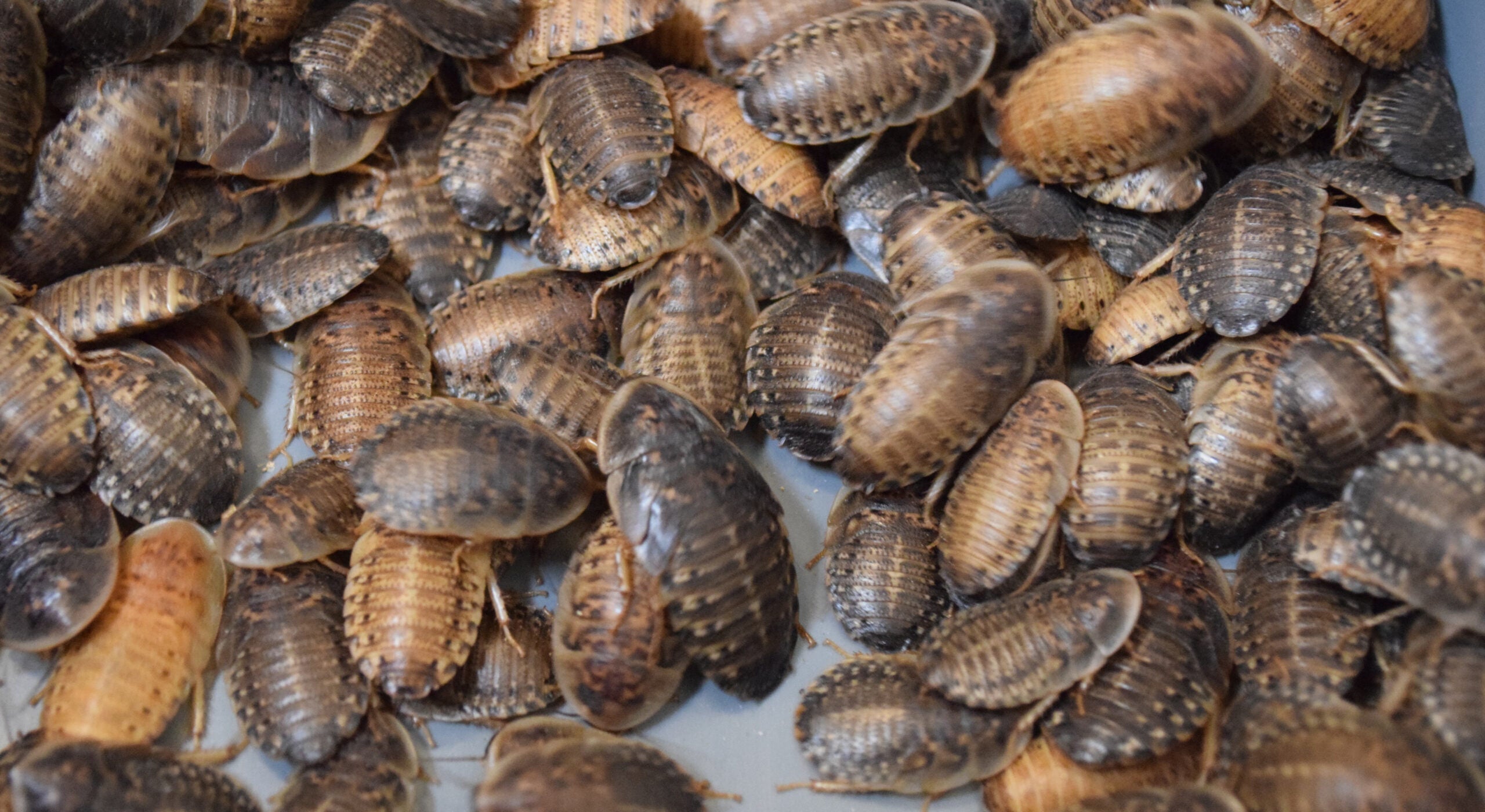Feeding your bearded dragon correctly is about more than giving it bugs and greens—it’s about balance, variety, and the right supplementation. Diet errors are among the top causes of illness in reptiles, but with a little planning, your dragon can thrive for years.
At Nexus Morphs, we’ve developed feeding and supplementation practices that support long-term health, growth, and color performance in our dragons. Here’s how to build a diet plan that works.
1. Understanding the Bearded Dragon Diet
Bearded dragons are omnivores. They need both animal and plant matter to grow, build muscle, and maintain bone strength.
| Life Stage | Insects | Vegetables | Feeding Frequency |
|---|---|---|---|
| Hatchlings (0–3 months) | 70–80% | 20–30% | 2–3 feedings per day |
| Juveniles (3–12 months) | 50–60% | 40–50% | 1–2 feedings per day |
| Adults (12+ months) | 20–30% | 70–80% | 4–5 feedings per week |
2. Staple Greens and Vegetables
Vegetables provide essential fiber, hydration, and vitamins. A proper salad base should be available daily, even when feeding insects.
Best Greens (daily staples):
-
Collard greens
-
Mustard greens
-
Turnip greens
-
Dandelion greens
-
Endive or escarole
Add Variety With:
-
Squash
-
Bell peppers
-
Carrots (grated)
-
Bok choy
-
Cucumber
-
Zucchini
Avoid iceberg lettuce, spinach, and anything seasoned or processed.
4. Fruits as Occasional Treats
Fruit can provide extra hydration and enrichment but should remain under 5% of total diet.
Safe Fruits (1–2x per week):
-
Berries (blueberry, strawberry, raspberry)
-
Mango
-
Apple (no seeds)
-
Papaya
-
Pear
5. Supplementation: Calcium, Vitamins, and Gut Loading
Supplementation is where most new keepers fall short. Even with the best food, captive diets need mineral support to replace what wild dragons get from sunlight, soil minerals, and diverse insect prey.
Calcium
-
Purpose: Prevents metabolic bone disease (MBD) and supports muscle function.
-
Type: Use calcium carbonate powder (without D3 if your lighting setup provides proper UVB (T5 HO 10% or equivalent with properly measured UVB).
-
We give our babies and juveniles supplemental D3 and then plain calcium powder once they are well developed.
-
-
Use: Dust insects 4–5 times per week for juveniles, 3 times per week for adults.
Multivitamins
-
Purpose: Fills gaps in vitamins A, E, and trace minerals not found in commercial feeders or greens.
-
Use: Once weekly for adults; twice weekly for juveniles.
-
Product Tip: Avoid brands high in synthetic vitamin A—opt for beta-carotene-based formulas. We like the Fluker's Repta Vitamin reptile supplement.
Gut Loading
Feed your insects a nutrient-rich diet 24 hours before serving. Use leafy greens, vegetables, and high-protein insect diets to increase their nutritional value.
Pro Tip: A calcium-to-phosphorus ratio of roughly 2:1 across the total diet keeps bones strong and reduces the risk of softening or deformities.
6. Feeding Setup and Supplies
A good feeding setup prevents contamination and stress.
-
Shallow, tip-proof food dishes for greens and water
-
Soft-tipped feeding tongs for insects
-
Separate feeding tub for live prey (avoids substrate ingestion)
-
Calcium and vitamin powders
-
Insect storage and gut-loading containers
Clean dishes daily. Replace supplements every six months—they lose potency over time.
7. Hydration and Water
Hydration supports digestion, shedding, and kidney function.
-
Keep a shallow water bowl available and clean it daily.
-
Lightly mist greens before serving.
-
Optional: offer a weekly soak for hydration or during shedding.
-
Avoid distilled or heavily softened water.
8. Common Feeding Mistakes
-
Overfeeding protein in adults → leads to obesity or gout
-
Ignoring calcium supplementation → causes metabolic bone disease
-
Feeding wild-caught insects → pesticide and parasite risk
-
Overusing fruit → high sugar leads to loose stool and dehydration
-
Leaving live insects in enclosure overnight → stress and injuries
A healthy bearded dragon feeding plan combines quality food, proper supplementation, and consistent husbandry. Diet is directly linked to long-term health, bone structure, and behavior. When you get this right, everything else—activity, color, and growth—falls into place.

Share:
Bearded Dragon Enclosures: How to Build the Perfect Habitat